TRENDING
Mind-Bending Optical Illusions
Published
5 years agoon
You know what they say – don’t believe it until you see it, then see it twice. Sometimes our eyes deceive us, but sometimes we’re purposely being tested how our brain reacts. And it can be much easier to be tricked than you think.
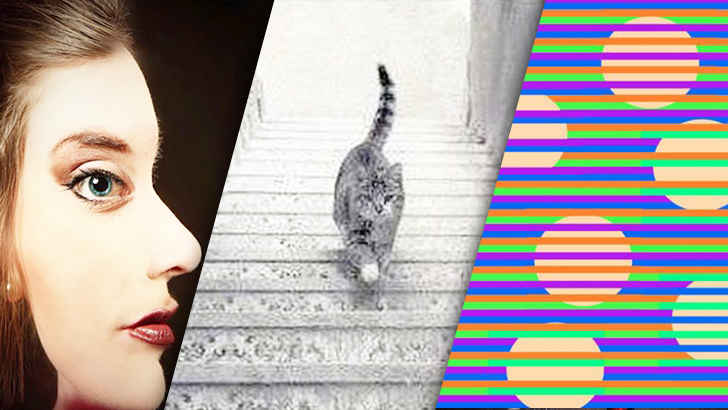
The following optical illusions aren’t meant to be easy to see, or to avoid seeing for that matter. They may be frustrating, but they will challenge your cognitive abilities and hopefully bring a little joy to your day. Read ahead to experience some mind-bending illusions.
Cloud Sailing

This artistic representation of a bridge, clouds, and Spanish galleons all merging together at the horizon is a fascinating image to stare at, as it becomes tougher to discern the difference the further the pattern drifts into the distance.
Liar Face

Upon first seeing this, you think of course, it’s just a face. But tilt your head to the right, and you will notice the word “Liar” written in cursive. Here, we’re shown that blotted ink with less uniform shape allows two completely different interpretations of a single pattern.
Moving Flowers

The craziest illusions are the ones that appear to be moving and flowing even though they’re just a still image. That’s all thanks to patterns, which help still shapes appear to be fluid thanks to the design of the smaller shapes inside a section of the picture.
Rabbit Duck

Most of the time, whichever animal you happen to see first – the rabbit or the duck – is likely the one you’re going to first when you look at this image. But when simply electing to look for the other, based on the reference in our brains, we’re easily able to make out the other animal.
Bannister People

At first look, you think you may be looking at a regular stair bannister, but once you notice the human figures in the negative space, you can’t unsee them. This is another example of a double image, which basically forces your mind to choose between seeing one or the other.
Tree of Faces

When looking at this tree, how many faces do you see? The longer you spend looking at it, the more that seems to appear. Not only is this a fantastic double image, but it shows how many intricacies you can hide in an image if you have more abstract shapes like branches to work with.
8 Legged Elephant

This trippy elephant is a wonderful optical illusion, because its creator purposely deceived us by placing the animal’s legs where there would normally be the empty space between them. This gives us the idea that there’s actually 8 legs, when there’s actually no complete ones.
Cat-Dog

You may recognize this sort of image from something a psychiatrist or school psychologist would give you. Do you see the dog with floppy ears, or the two cats with their takes touching, and a heart? Either way, this double image uses color and blotted patterns perfectly.
Front or Side?

This intriguing work of art is meant to be deceiving, and it’s all thanks to the eye. But when you move your focus down to the nose, you realize this face is either looking to the right, or directly at you. This phenomenal illusion is all thanks to the talented artist.
Two Trees?

While you probably have no problem seeing the two swaying trees, you probably have to stare intently to notice that it’s also a woman with her back turned to you, with her head and face gazing down and to the left. These artists are pretty good, huh?
Man or Woman?

This double image is a doozie, because psychiatrists say that the the two options categorize the viewer differently, with those who see the woman being passive, and those who see the man being aggressive. We’re not quite sure why, but does yours correspond?
Double Face
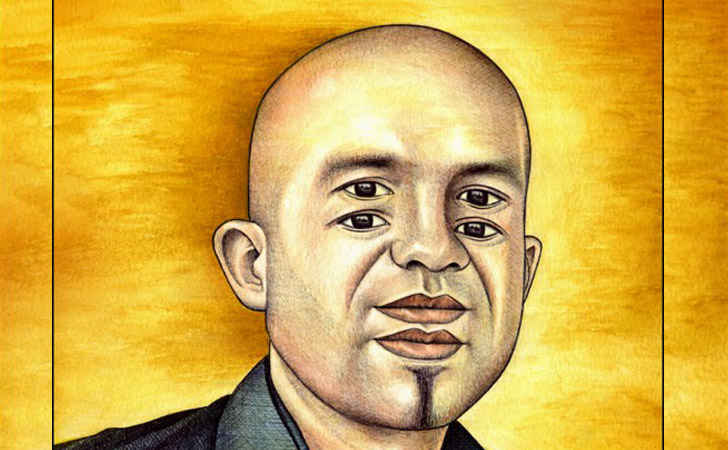
In this intriguing piece of art, the double eyes and mouth contrasted with the single ear and nose get your brain tangled up quickly. Somehow both seem right, but the inability to see the full head makes you think there must be more. Really, it’s a matter of perspective.
Moving Ferris Wheel

Like the other illusions that appear to be moving, this ferris wheel is using shape and color to give off the perspective of moving cabs. However, if you look closely, there’s a white semicircle on the edge of each purple oval, which helps drag the eye around as if it’s moving.
Three Men

Here is another good example of foreground and background illusions, as we look at three soldiers who appear to get bigger left to right. However, all the men are the same size, but because the background lines get tighter, it gives the perception that the third man is somehow bigger.
Helicopter Blades

In another perspective illusion, these two helicopters appear to be distanced, because the blades obviously can’t be too close. However, the lines also appear to be different lengths, but this is largely due to them being in opposite directions. If you measure, you’ll see they’re the same.
Rotating Circles

This spinning circular illusion combines the spiral effect with the moving pattern effect, giving the mind the idea that all of the circles are rotating as we glance around the different areas. The pink sprout emerging from each one also likely has something to do with it.
Cat on Stairs

The ultimate question here is whether the cat is traveling up or down the stairs. Due to the shape of stairs in general, they’re basically already at a diagonal angle, and when taking a photo, up and down look the same without outside context. Which do you think it is?
Checker Shadow

This iconic illusion once again deals with shadows, and the way they contrast to surrounding colors. Though A and B appear to be different colors at first glance, because A’s surrounded by lighter squares and B is surrounded by darker squares, our brain compares the two and conflicts our perception. They are both the same color, believe it or not.
Sinking Floor

This building’s floor was bound to startle some people at first site, since it looks like the ground has sunken in. But it’s obviously just a creative painting job by the staff, who developed the pattern by slanting in the sides of the checkerboard to make the shapes appear to be falling.
12 Dots

In this geometric image, you may notice that you’re continuously seeing black dots in various spaces, but they also keep disappearing. Due to the complex pattern, your eyes are never able to see all 12 dots at once, even if you try really hard. This is due to all the connecting lines.
3D Cube

The longer you look at this cube, the more you admire its symmetry and precise angles. It’s almost as if you can see the 3D version the less you care about how the sides are connected.
Ebbinghaus Illusion

Once you look at this image, you almost know right away what the trick is. Even though the shapes seem to be vastly different sizes, the orange circles are identical. It’s the illusion that the size of the shapes around the circles conflict our idea of how we perceive the circle’s size.
Shades of Red

This is a good example of how lighting affects our perception of color. To us, the red seems less vibrant when paired with the white stripes, opposed to the darker looking tone it has juxtaposed to the black. Thing is, the red is uniform throughout the image.
Illusionary Triangle

The magnificent part about this image is that it shows the brain is always hard at work. Though we see the inverted white triangle, our mind is actually creating it based on the shapes drawn around it. Because they’re equilaterally drawn, you see two triangles, even though there are none.
Perplexing Trident

This is one of the most famous optical illusions – the blivet. With the rectangular top, you assume it will only have two legs, but the three cylinders at the bottom say otherwise. This once again shows how we’re easily tricked by 3D shapes when drawn on a 2D surface. Especially at angles.
Marble Triangle

Another 3D illusion that’s using shape to create discenerable confusion is this play button with a marble on it. It simultaneously appears to be on top of the triangle, while also appearing to be on the lower horizontal side. This is because the left column and the positioning of the marble create the illusion of it being in two places at once.
Endless Spiral

We’ve almost all seen this one before, as the spiraling vortex is a classic optical illusion that literally has your mind spinning thanks to the careful craft of colors and patterns slowly shrinking. Black and white are usually the most effective schemes, and really make this one pop.
Cube Cut

This 3D mind bender is a classic case of what did you see first. Upon looking at this larger cube, you either see the smaller one as a cut-out of the larger, or you envision the cube sitting in the corner of two walls. This is thanks to the three sides of the visible figure mirroring the same color shading in both the small and large cube.
Grey Dots

Thanks to a lot of contrast and some good symmetry, this is another moving illusion that’s created by your brain filling in the gaps. As you look at different areas of the image, grey dots appear to form in the corners where the white lines intersect. They don’t exist, but it’s because you mind is tricked by the perfect black and white contrast.
Invisible Circle

The crazy part about color is that it plays more tricks on your mind than you may realize. In this image, all of the lines are simply painted blue, and no circle actually exists on the graphic. But because the blues extend to the exact points that would be a circle, your brain creates one for you.
Mirror Shapes

Known as the ambiguous cylinder illusion, you’ll quickly know why, because all these shapes are true mirror images of each other. Because ambiguous circles are in between square and circle shapes, when rotated, they process in the brain as different shapes when reflected. Talk about mind bending…
Hering Illusion

You almost immediately know that with all the blue lines streaking out in expanding directions, that something is funky about the two thicker red lines in the middle. Even after looking intently, they give off the illusion that they’re crooked due to the passing blue lines, but they are most definitely straight.
Confetti Circles

This fun-colored illusion was created by professor David Novick from the University of Texas, and if you’re guessing what the trick is, you’re right. All the circles are, in fact, the same color. This is another case of primary and secondary shading playing games with our mind.
Disappearing Image

For a picture that is right in front of your face, it’s almost alarming how quickly it just isn’t anymore. That’s because this clever illusion is one that disappears once you’ve stared at it long enough, and that’s just masterful craft.
Hidden Love

When it comes to these black and white patterns, it always takes a few seconds to focus on what the lines are actually doing. However, within the diagonal stripes on this image, there are also inverted stripes that are strategically placed to write out a message. Can you read it?
Skewed Squares

What’s curious about disorientation is that multiple irregularities tend to make things seem more skewed than they actually are. Here, because the black and white squares are a bit uneven in each row, they make the grey lines separating the rows appear not to be straight.
Negative Profiles

In this negative space, you can see a figure’s face in the black outline over the lighter colored side, but upon a second glance, you may notice there are actually two faces – another lies below.
Grey Shading

In another example of color contrast, the rectangle here is all the same uniform grey, but as you watch the background color move from dark to light, your perception of just how dark or light the grey is changes. This is due to the context around the shape in the foreground.
Lines & Arrows

This is another famous mind trick, which makes you assume all the lines are different lengths, due to the shapes of the arrows drawn at the end. However, underneath you’re able to see they’re all equal, and that the shape of the ends are distorting your perception.
Glass Faces

In another example of color and negative space, at first you may just see the silhouettes of two heads coming together, but don’t forget about the grey! In that middle section you will see a goblet, which is almost crazy considering how easy it is to see both faces.
Eye Stereograms

These stereograms make you work for the illusion, but show that it’s more about how the brain processes it as opposed to the literal visual. On this one, stare at the image and unfocus, then refocus, and you should be able to see a skull behind what your eyes initially can’t see.
Artificial Blue

This optical illusion is already done for you, but what you can’t tell is that this was originally a black and white image. However, when you stare at the blue dot in the center then look back at the uncolored version, this is the saturation you see, thanks to focusing your eyes on the blue.
More From Auto Overload
-


Celebrities Who Never Married
-


Major Brands Closing Stores in 2023
-
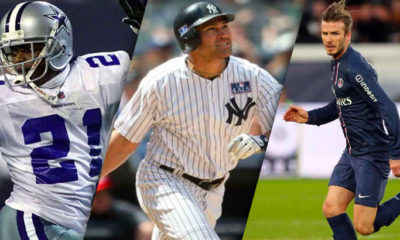

Most Overrated Athletes Ever!
-
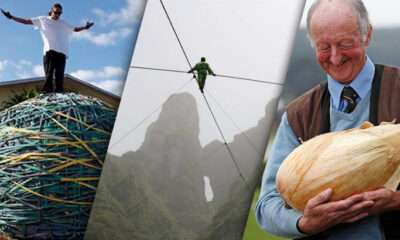

Most Bizarre Guinness World Record Holders
-
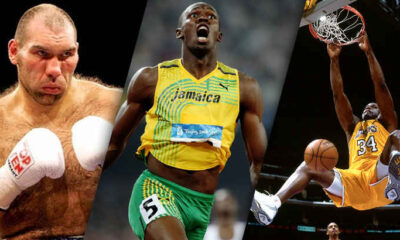

The Largest Athletes In Sports History
-


Rare Historical World War II Photos
-


Popular Companies Closing Stores
-


Pro Wrestlers Then & Now
-


Amazing Footage Caught On Trail Cams
-


Mighty Military Vehicles in the World Today
-


Historical Photos From World War II
-


Famous Daughters of Celebrities

